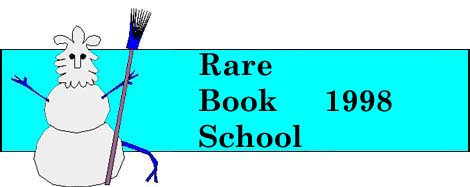Book Illustration to 1890. The purpose of this course is to
teach students how to tell the difference between the various relief,
intaglio, and planographic printing methods used in printed book
illustration in the period before the domination of photographic
processes. The emphasis of the course will be on process rather than on
connoisseurship, on execution rather than design, and on the practical
rather than the theoretical.
Almost the sole medium of instruction will be actual examples of
original prints drawn from substanital BAP collection, many of them
divided into suites or (as they are known locally) packets of
twelve prints all from the same (or a very similar) source. The twelve
students in the class study the packets under close instruction, using
8X loupes and 30X microscopes (both provided), as necessary.
During the course, students will make and printa linoleum cut, a zinc
etching, and an acrylic drypoint. These are exercises in
reproductive--not creative--work: no artistic ability of any kind
whatsoever is either necessary or expected.
In their personal statement, prospective applicants should describe the
extent of their formal and/or informal background in the field.
Terry
Belanger. Previously offered 83-85 87-88 90-93 94
[twice] 95-97
| 
